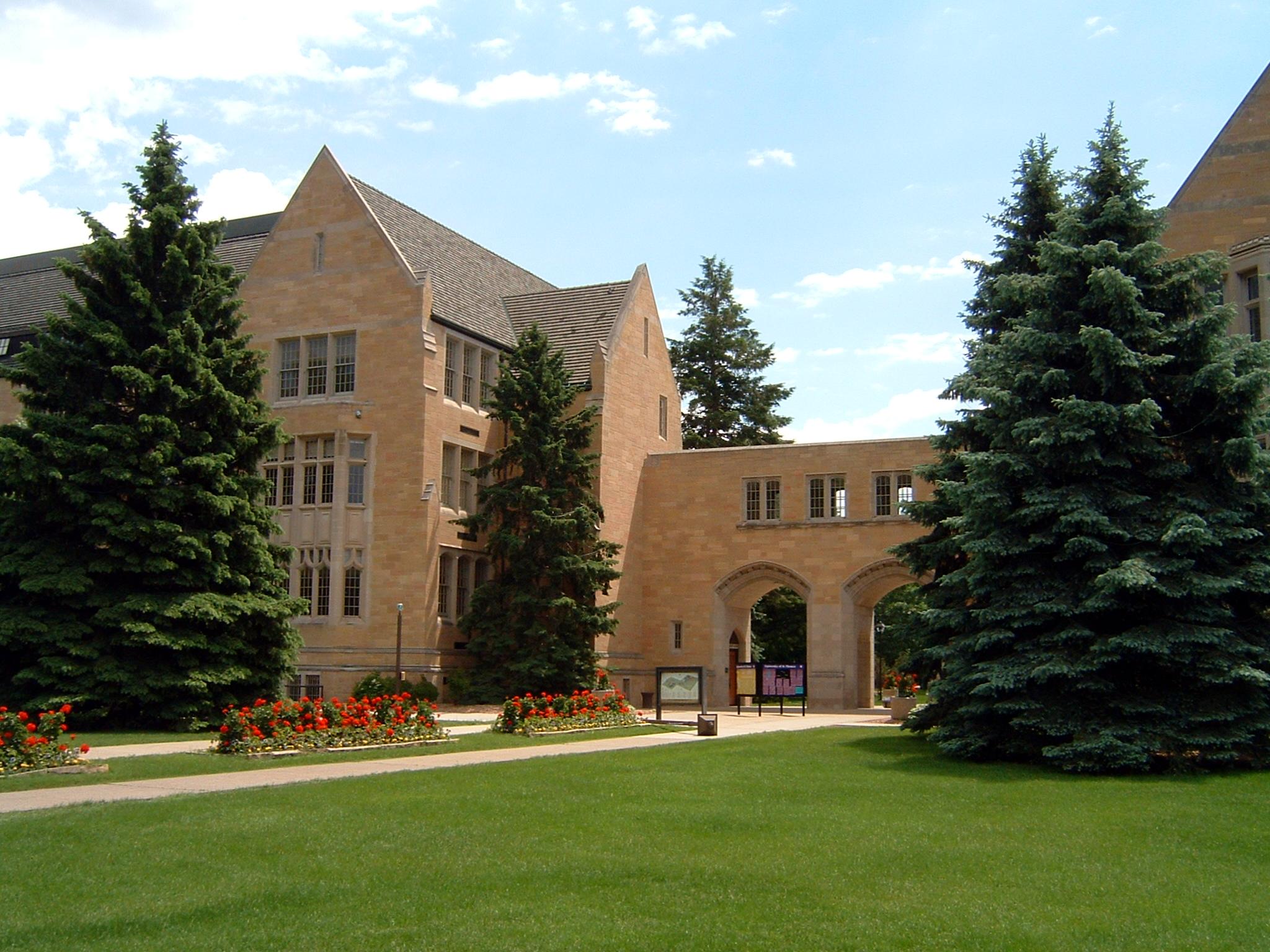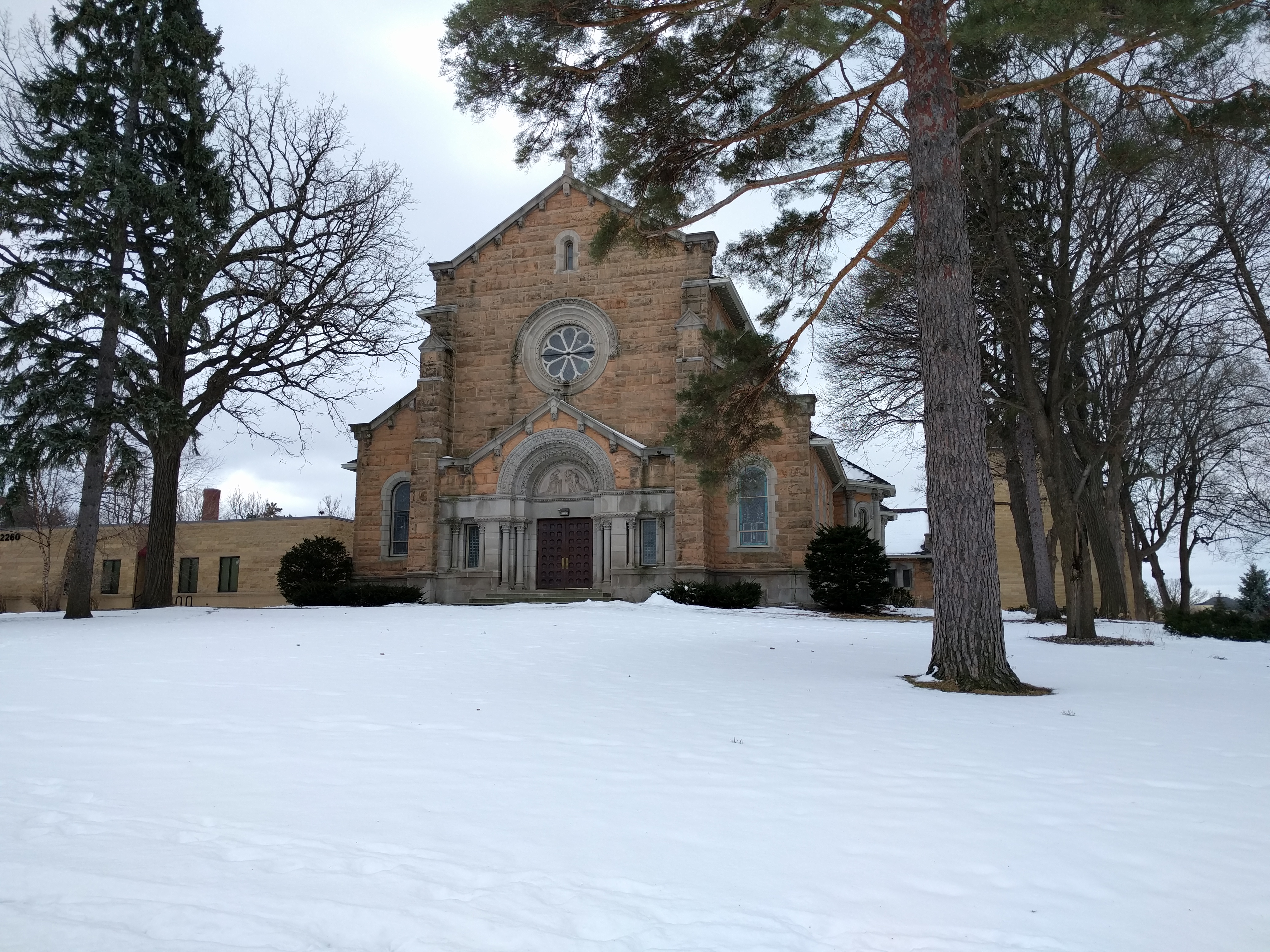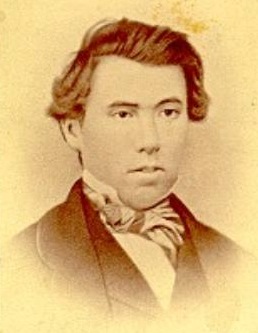|
University Of St. Thomas (Minnesota)
The University of St. Thomas (also known as UST or simply St. Thomas) is a private Catholic research university with campuses in Saint Paul and Minneapolis, Minnesota, United States. Founded in 1885 as a Catholic seminary, it is named after Thomas Aquinas, the medieval Catholic theologian and philosopher who is the patron saint of students. As of fall 2021, St. Thomas enrolled 9,347 students, making it Minnesota's largest private, nonprofit university. History Founded in 1885 by John Ireland, archbishop of Saint Paul and Minneapolis, St. Thomas began as an all-male, Catholic seminary. In 1894, the liberal arts program became an independent college through a gift from local railroad tycoon James J. Hill, who provided funds to establish the Saint Paul Seminary apart from the college. In 1903, the College of St. Thomas established a military program on campus, and it was officially termed a military school by the U.S. War Department in 1906. Initially, the school gave out two- ... [...More Info...] [...Related Items...] OR: [Wikipedia] [Google] [Baidu] |
Catholic Church
The Catholic Church (), also known as the Roman Catholic Church, is the List of Christian denominations by number of members, largest Christian church, with 1.27 to 1.41 billion baptized Catholics Catholic Church by country, worldwide as of 2025. It is among the world's oldest and largest international institutions and has played a prominent role in the history and development of Western civilization.Gerald O'Collins, O'Collins, p. v (preface). The church consists of 24 Catholic particular churches and liturgical rites#Churches, ''sui iuris'' (autonomous) churches, including the Latin Church and 23 Eastern Catholic Churches, which comprise almost 3,500 dioceses and Eparchy, eparchies List of Catholic dioceses (structured view), around the world, each overseen by one or more Bishops in the Catholic Church, bishops. The pope, who is the bishop of Rome, is the Papal supremacy, chief pastor of the church. The core beliefs of Catholicism are found in the Nicene Creed. The ... [...More Info...] [...Related Items...] OR: [Wikipedia] [Google] [Baidu] |
Varsity Team
A varsity team is the highest-level team in a sport or activity representing an educational institution. Varsity teams train to compete against each other during an athletic season or in periodic matches against rival institutions. At high schools in the United States, a varsity team is one step above a school's junior varsity (JV) team, which is composed of less experienced players. The term originated in Britain in the 1840s and means ''university'', referring to the principal team that would represent the university in matches against another university. In contrast, student-run college teams within a university typically compete against each other in intramural events. Britain and Ireland In the Britain and Ireland, varsity teams compete in varsity matches against rival universities. The term dates from the 1840s, and originally referred to teams from the University of Oxford and University of Cambridge that competed in various varsity matches such as The University Ma ... [...More Info...] [...Related Items...] OR: [Wikipedia] [Google] [Baidu] |
University Of St
A university () is an institution of tertiary education and research which awards academic degrees in several academic disciplines. ''University'' is derived from the Latin phrase , which roughly means "community of teachers and scholars". Universities typically offer both undergraduate and postgraduate programs. The first universities in Europe were established by Catholic monks. The University of Bologna (), Italy, which was founded in 1088, is the first university in the sense of: *being a high degree-awarding institute. *using the word (which was coined at its foundation). *having independence from the ecclesiastic schools and issuing secular as well as non-secular degrees (with teaching conducted by both clergy and non-clergy): grammar, rhetoric, logic, theology, canon law and notarial law.Hunt Janin: "The university in medieval life, 1179ŌĆō1499", McFarland, 2008, , p. 55f.de Ridder-Symoens, Hilde''A History of the University in Europe: Volume 1, Universities in the ... [...More Info...] [...Related Items...] OR: [Wikipedia] [Google] [Baidu] |
Diocese
In Ecclesiastical polity, church governance, a diocese or bishopric is the ecclesiastical district under the jurisdiction of a bishop. History In the later organization of the Roman Empire, the increasingly subdivided Roman province, provinces were administratively associated in a larger unit, the Roman diocese, diocese (Latin ''dioecesis'', from the Greek language, Greek term ╬┤╬╣╬┐╬»╬║╬ĘŽā╬╣Žé, meaning "administration"). Christianity was given legal status in 313 with the Edict of Milan. Churches began to organize themselves into Roman diocese, dioceses based on the Roman diocese, civil dioceses, not on the larger regional imperial districts. These dioceses were often smaller than the Roman province, provinces. Christianity was declared the Empire's State church of the Roman Empire, official religion by Theodosius I in 380. Constantine the Great, Constantine I in 318 gave litigants the right to have court cases transferred from the civil courts to the bishops. This situa ... [...More Info...] [...Related Items...] OR: [Wikipedia] [Google] [Baidu] |
Congregation Of Holy Cross
The Congregation of Holy Cross (), abbreviated CSC, is a Catholic clerical religious congregation of pontifical right for men founded in 1837 by Basil Moreau, in Le Mans, France. Moreau also founded the Marianites of Holy Cross for women, now divided into three independent congregations of sisters: the Marianites of Holy Cross ( Le Mans, France), the Sisters of the Holy Cross ( Notre Dame, Indiana), and the Sisters of Holy Cross (Montreal, Quebec, Canada). History Two Societies Basile Antoine-Marie Moreau was born at Laign├®-en-Belin, near Le Mans, France, on February 11, 1799, in the final months of the French Revolution. When Moreau decided to enter the priesthood, he was forced to undergo his seminary training in secret for fear that the French government would arrest him. He completed his studies and was ordained for the Diocese of Le Mans in 1821. The French government continued to work for the removal of the Church from the educational system, which left many ... [...More Info...] [...Related Items...] OR: [Wikipedia] [Google] [Baidu] |
United States Department Of War
The United States Department of War, also called the War Department (and occasionally War Office in the early years), was the United States Cabinet department originally responsible for the operation and maintenance of the United States Army, also bearing responsibility for naval affairs until the establishment of the United States Department of the Navy, Navy Department in 1798, and for most land-based air forces until the creation of the United States Department of the Air Force, Department of the Air Force on September 18, 1947. The United States Secretary of War, secretary of war, a civilian with such responsibilities as finance and purchases and a minor role in directing military affairs, headed the War Department throughout its existence. The War Department existed for 158 years, from August 7, 1789, to September 18, 1947, when it split into the United States Department of the Army, Department of the Army and the United States Department of the Air Force, Department of the ... [...More Info...] [...Related Items...] OR: [Wikipedia] [Google] [Baidu] |
Saint Paul Seminary
The Saint Paul Seminary (SPS) is a Catholic Church, Catholic major seminary in St. Paul, Minnesota. A part of the Roman Catholic Archdiocese of Saint Paul and Minneapolis, Archdiocese of Saint Paul and Minneapolis, SPS prepares men to enter the priesthood and permanent diaconate, and educates lay men and women on Catholic theology. SPS sits adjacent to the south campus of the University of St. Thomas (Minnesota), University of St. Thomas. Since its creation in 1894, over 3,000 seminarians from SPS have been ordained priests. Thirty-three of these priests were consecrated as bishops, including three archbishops. One SPS alumnus, Fulton J. Sheen, Archbishop Fulton J. Sheen, is a candidate for canonization. History Early history After the opening of College of Saint Benedict and Saint John's University, St. John's College in 1867, most minor seminarians for the Diocese of Saint Paul were educated there or at other seminary institutions in the United States or in Europe. Ho ... [...More Info...] [...Related Items...] OR: [Wikipedia] [Google] [Baidu] |
James Jerome Hill
James Jerome Hill (September 16, 1838 ŌĆō May 29, 1916) was a Canadian-American railway director. He was the chief executive officer of a family of lines headed by the Great Northern Railway, which served a substantial area of the Upper Midwest, the northern Great Plains, and the Pacific Northwest in the United States. Because of the size of this region and the economic dominance exerted by the Hill lines, Hill became known during his lifetime as "The Empire Builder", and died in 1916 with a fortune of about 63 million dollars. His former home, James J. Hill House, is now a museum in Saint Paul, Minnesota. Biography Childhood and youth James J. Hill was born September 16, 1838, in Eramosa Township, Upper Canada (now Ontario) to James Hill Jr. and Ann Dunbar. A childhood accident with a bow and arrow blinded him in the right eye. He had nine years of formal schooling. He attended the Rockwood Academy for a short while, where the head of the academy gave him free tuition. He w ... [...More Info...] [...Related Items...] OR: [Wikipedia] [Google] [Baidu] |
Liberal Arts Education
Liberal arts education () is a traditional academic course in Western higher education. ''Liberal arts'' takes the term '' art'' in the sense of a learned skill rather than specifically the fine arts. ''Liberal arts education'' can refer to studies in a liberal arts degree course or to a university education more generally. Such a course of study contrasts with those that are principally vocational, professional, or technical, as well as religiously based courses. The term ''liberal arts'' for an educational curriculum dates back to classical antiquity in the West, but has changed its meaning considerably, mostly expanding it. The seven subjects in the ancient and medieval meaning came to be divided into the trivium of rhetoric, grammar, and logic, and the quadrivium of astronomy, arithmetic, geometry, and music. Since the late 1990s, major universities have gradually dropped the term ''liberal arts'' from their curriculum or created schools for liberal art disciplines to c ... [...More Info...] [...Related Items...] OR: [Wikipedia] [Google] [Baidu] |
Roman Catholic Archdiocese Of Saint Paul And Minneapolis
The Archdiocese of Saint Paul and Minneapolis () is a Latin Church ecclesiastical jurisdiction or diocese of the Catholic Church in the United States. It is led by an archbishop who administers the archdiocese from the cities of MinneapolisŌĆōSaint Paul, Saint Paul and Minneapolis. The archbishop has both a cathedral and co-cathedral: the mother church ŌĆō the Cathedral of Saint Paul (Minnesota), Cathedral of Saint Paul inŌĆōSaint Paul, Minnesota, Saint Paul, and the co-cathedral, the Basilica of Saint Mary (Minneapolis), Basilica of Saint Mary in Minneapolis. The archdiocese has 188 parish church (building), churches in twelve County (United States), counties of Minnesota. It counts in its membership an approximate total of 750,000 people. It has two seminaries, the Saint Paul Seminary and Saint John Vianney Seminary (Minnesota), Saint John Vianney College Seminary. Its official newspaper is ''The Catholic Spirit''. History Pre-diocesan The first Catholic presence in prese ... [...More Info...] [...Related Items...] OR: [Wikipedia] [Google] [Baidu] |
John Ireland (archbishop)
John Ireland (baptized September 11, 1838 – September 25, 1918) was an American prelate who was the third Catholic Church, Catholic bishop and first Roman Catholic Archdiocese of Saint Paul and Minneapolis, archbishop of Saint Paul, Minnesota (1888–1918). He became both a religious as well as civic leader in Saint Paul, Minnesota, Saint Paul during the turn of the 20th century. Ireland was known for his progressive stance on education, immigration and relations between Separation of church and state, church and state, as well as his opposition to saloons, alcoholism, political machines, and political corruption. He promoted the Americanization of Catholicism, especially through imposing the English only movement on Catholic parishes by force, a private war against the Eastern Catholic Churches, seeking to make Catholic schools identical to public schools through the Poughkeepsie plan, and through other progressive social ideas. He was widely considered the primary lea ... [...More Info...] [...Related Items...] OR: [Wikipedia] [Google] [Baidu] |
Middle Ages
In the history of Europe, the Middle Ages or medieval period lasted approximately from the 5th to the late 15th centuries, similarly to the post-classical period of global history. It began with the fall of the Western Roman Empire and transitioned into the Renaissance and the Age of Discovery. The Middle Ages is the middle period of the three traditional divisions of Western history: classical antiquity, the medieval period, and the modern period. The medieval period is itself subdivided into the Early, High, and Late Middle Ages. Population decline, counterurbanisation, the collapse of centralised authority, invasions, and mass migrations of tribes, which had begun in late antiquity, continued into the Early Middle Ages. The large-scale movements of the Migration Period, including various Germanic peoples, formed new kingdoms in what remained of the Western Roman Empire. In the 7th century, North Africa and the Middle EastŌĆöonce part of the Byzantine EmpireŌ ... [...More Info...] [...Related Items...] OR: [Wikipedia] [Google] [Baidu] |






